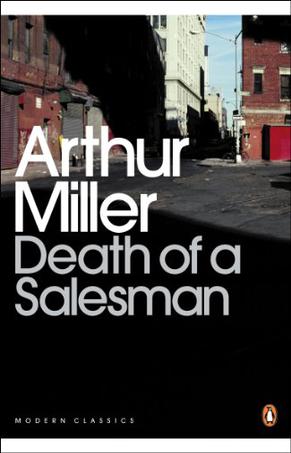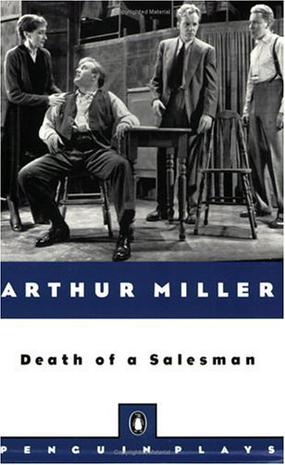Death of a Salesman
Arthur Miller
Book Description
Arthur Miller seemed to capture the sometimes tragic plight of the common man with his Death of a Salesman. Bloom suggests the strength of the play is puzzling but beyond dispute, lying more in its presentation on stage than its written form. The play's continued vitality is unquestioned.
The title, Arthur Miller’s Death of a Salesman, part of Chelsea House Publishers’ Modern Critical Interpretations series, presents the most important 20th-century criticism on Arthur Miller’s Death of a Salesman through extracts of critical essays by well-known literary critics. This collection of criticism also features a short biography on Arthur Miller, a chronology of the author’s life, and an introductory essay written by Harold Bloom, Sterling Professor of the Humanities, Yale University.
Amazon.com
Arthur Miller's 1949 Death of a Salesman has sold 11 million copies, and Willy Loman didn't make all those sales on a smile and a shoeshine. This play is the genuine article--it's got the goods on the human condition, all packed into a day in the life of one self-deluded, self-promoting, self-defeating soul. It's a sturdy bridge between kitchen-sink realism and spectral abstraction, the facts of particular hard times and universal themes. As Christopher Bigsby's mildly interesting afterword in this 50th-anniversary edition points out (as does Miller in his memoir, Timebends), Willy is closely based on the playwright's sad, absurd salesman uncle, Manny. But of course Miller made Manny into Everyman, and gave him the name of the crime commissioner Lohmann in Fritz Lang's angst-ridden 1932 Nazi parable, The Testament of Dr. Mabuse.
The tragedy of Loman the all-American dreamer and loser works eternally, on the page as on the stage. A lot of plays made history around 1949, but none have stepped out of history into the classic canon as Salesman has. Great as it was, Tennessee Williams's work can't be revived as vividly as this play still is, all over the world. (This edition has edifying pictures of Lee J. Cobb's 1949 and Brian Dennehy's 1999 performances.) It connects Aristotle, The Great Gatsby, On the Waterfront, David Mamet, and the archetypal American movie antihero. It even transcends its author's tragic flaw of pious preachiness (which undoes his snoozy The Crucible, unfortunately his most-produced play).
No doubt you've seen Willy Loman's story at least once. It's still worth reading.
--Tim Appelo
From Library Journal
This 50th-anniversary edition of Miller's masterpiece, which certainly is a contender for the finest American drama of the 20th century, includes the full text of the play, a chronology of its productions, photos from various stagings including the current Broadway revival, and a new preface by Miller himself, all in a quality hardcover for a reasonable price. Bravo, Penguin.
From The Merriam-Webster Encyclopedia of Literature
A play in "two acts and a requiem" by Arthur Miller, written in 1948 and produced in 1949. Miller won a Pulitzer Prize for the work, which he described as "the tragedy of a man who gave his life, or sold it" in pursuit of the American Dream. After many years on the road as a traveling salesman, Willy Loman realizes he has been a failure as a father and husband. His sons, Happy and Biff, are not successful--on his terms (being "well-liked") or any others. His career fading, Willy escapes into reminiscences of an idealized past. In the play's climactic scene, Biff prepares to leave home, starts arguing with Willy, confesses that he has spent three months in jail, and mocks his father's belief in "a smile and a shoeshine." Willy, bitter and broken, his illusions shattered, commits suicide.
Book Dimension
length: (cm)19.7 width:(cm)12.8

